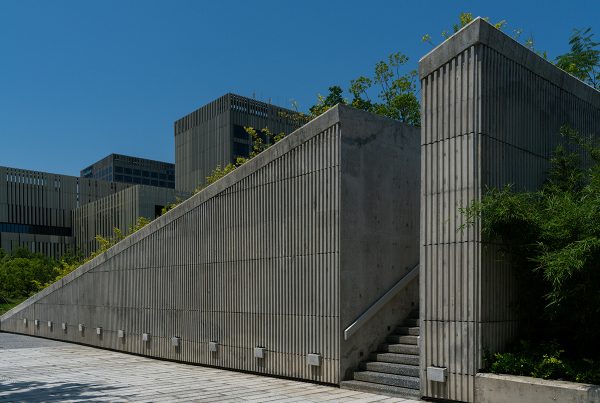Here are the stories that defined the month of May: from melting ice shelves and global levels of CO2, to a 19th-century-inspired solar energy system to the insane amount of water a small piece of steak requires for it to reach our plates.
One Flag to Unite Earth, Sort of
In anticipation of our space-traveling and planet-seeking adventures in the future, a Swedish university student has designed the “International Flag of Planet Earth” to be planted on the next alien world humans set foot on.
Via Space
How Much Water Does Your Food Cost?
We’ve known for a while about the heavy dependence on water of growing livestock for meat, but Buzzfeed has prepared a more in-your-face video that details the insane amounts of water that goes to an 8 oz of steak.
Via Buzzfeed
One More Wooden Building Planned
The rise of plyscraper is upon us. The latest city to gear up for wooden buildings is the city of Quebec in Canada. The project, a 13-storey apartment to be done by Nordic Structures, will use cross-laminated timber, and will hopefully spur market growth in solid wood building products. Compared to the wasteful carbon footprint of a traditional steel-and-concrete skyscraper, a 20-storey plyscraper is like getting 900 cars off the road for an entire year.
Via Treehugger
Obama: Climate Change is a Threat to National Security
President Obama is now looking at climate change with a more holistic point of view, one that includes national security as one of its biggest concern. In particular, climate change can aggravate poverty, political instability and social tensions that induce terrorism, as well as posing challenges to military bases, highways, roads, railways energy facilities due to rising sea levels. Climate change as a threat to the envionment and biodiversity garners no political will, but is suddenly given attention when national security is put on the line.
Via MSN
Future-Proof Designs in Architecture
Jared Green, author of Designed for the Future, looks at the ingenious ways architecture of the past unknowingly anticipates the sustainability challenges of today and the future.

The majesty of Cambodia’s Angkor Wat is both future-proof and sustainable. (Courtesy of JustThePlanet.com)
Examples include Cambodia’s famoust Angkor Wat to Jože Plecnik’s riverwalk in Ljubljana, Slovenia, with three variou levels of pathways for addressing high and low water levels.
Via Wired
A New Super Efficient Way to Harness Sunlight
Converting an impressive 34 percent of sunlight into electricity (at par or better than traditional photovoltaic cells), a new solar setup has been created by Swedish company RiPasso Energy.

Solar energy, according to the Swedes, with a little inspiration from a 19th century Scottish reverend.
(Courtesy of The Guardian)
Instead of solar cells, the setup uses 100-meter dishes that harnesses sunlight into a single, high-intensity point, the heat of which drives a Stirling engine. In this 19th-century-inspired machine, alternate heating and cooling of a closed-volume gas drives a piston which then rotates a flywheel which generates the electricity.
Via Gizmodo
The Wake-up Call That Is 400 Parts per Million
For the first time in five decades, an all-time high of carbon dioxide levels was reached last March, with measurements exceeded 400 parts per million (ppm) globally. The first time 400 ppm measurements were taken was last 2013 at Mauna Loa, Hawaii. Since then, 12 other observatories in the northeren hemisphere have reported 400 ppm readings. Last March’s measurement is significant though because it has reached global levels. This « milestone » hopefully becomes a wake-up call for all of us.
Via Discovery
The Melting Ice Shelf in Antartica and What It Means for Us
Antartica’s 10,000-year-old ice shelf Larsen B is in danger of rapidly collapsing by the end of the decade due to increased temperature and climate change. When the ice shelf finally breaks completely, the world will be expecting more drastic rising sea levels. The ice shelf first showed signs of disintegrating back in 2002.
Via Discovery











